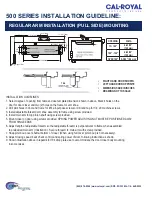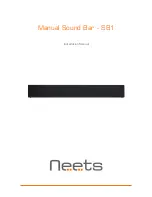
29
Ø
Pipe thickness
Tightening torque
1/4”
≥0.8
15 - 20
3/8”
≥0.8
30 - 40
1/2”
≥0.8
45 - 55
5/8”
≥0.8
60 - 65
7/8”
≥0.8
Fig. D
Fig. A
Fig. B
Fig. C
Fig. E
CREATING COOLING LINES
•
Refrigerant R410A
•
Use suitable copper pipes for gas and liquid, as indicated in the relative table
(see the connection pipes table).
•
Before assembling the insulated copper pipes on the refrigerant lines, seal both
ends of each pipe to protect the inside from dust and humidity. The inside of
the pipes must be perfectly clean and free of any foreign bodies.
•
Try to avoid bending the pipes. If you must bend them, the bend radius should
be greater than 100mm.
•
The chiller lines in multisplit systems must observe precise limits based
on the type of external unit used; For more information about these limits
and the type of chiller connection, refer to the outdoor unit technical man-
uals or installation manuals.
Multisplit systems may have chiller connection systems and joints that differ in relation to
the type of product; however, once the various chiller lines have been set up (using the
cooling gas joint and distribution accessories envisaged by the system), the connection
of the Indoor Units to the remaining lines in the system will take places as follows:
1.
Shape the chiller lines from the Indoor unit as far as the couplings envisaged on
the system's cooling lines.
2.
Prepare the lines on the side of the Indoor Units as follows:
•
Measure the inner and outer pipe precisely.
•
Use a pipe which is slightly longer than the measurement taken.
•
Cut the copper pipes to measure using the pipe cutter and smooth the ends
with a pipe reamer (Fig. A);
•
Insulate the pipes and fit conical nuts before fitting collars to the ends of the
pipes (Fig. B);
•
To fit the conical collars at 45° use a bevel edging tool (Fig. C);
•
Debur the ’inside of the pipes
•
During reaming, the end of the pipe must be above the reamer to prevent the
ingress of dust into the pipe.
•
Make sure that the inside of the pipe is clean and free of any swarf.
•
Check the conical surface is in line with the pipe, and that it is smooth, without
fractures and of uniform thickness (Fig. D).
3.
Check the difference in level of the indoor and outdoor units to verify any need
for one or more siphons on the cooling lines (for more details, refer to the specific
section)
4.
Before connecting the pipes to the unit, check the position is correct.
5.
Clean the joint surfaces so the tightening surfaces are in perfect contact.
6.
Lubricate the connections inside and out with a thin layer of engine oil.
7.
Connect and tighten the refrigerant lines on the indoor unit use a wrench and
counter-wrench to avoid subjecting the pipes to torsion (Fig. E).
8.
Respect the tightening torque indicated in the table.
COOLING CONNECTIONS
Содержание TRS 1001DX
Страница 17: ...17 SCHEMA ELETTRICO ...
Страница 18: ...18 ...
Страница 34: ...34 WIRING DIAGRAM ...
Страница 50: ...50 SCHÉMA ÉLECTRIQUE ...
Страница 66: ...66 ELEKTRISCHES SCHEMA ...
Страница 82: ...82 ESQUEMAS ELÉCTRICO ...
Страница 83: ...83 ...
















































